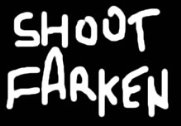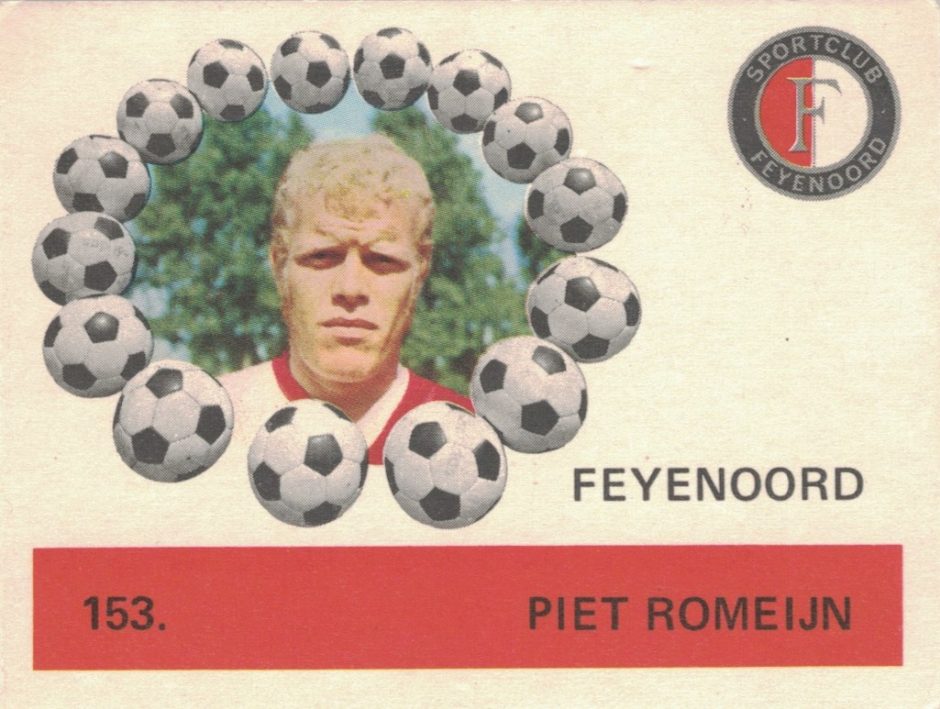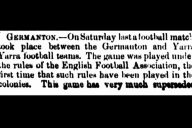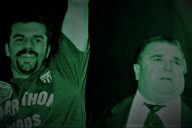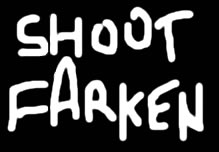In a country renowned for charming cities and towns, Schiedam is always going to struggle to attract visitors. Part of Greater Rotterdam, it’s not that it lacks things to see and do: much of its old town centre is archetypal Dutch, with canals, windmills (the tallest in Holland), delightful old buildings, a renowned art gallery-museum and a couple of fascinating museums, one focused on jenever (gin), another on the Dutch co-op shop movement. But the overall impression of the place is its straightforward, gritty, functionality. Once the heart of Holland’s jenever industry, later home to massive shipyards and docks, it’s an old industrial town complete with large tracts of worker housing. You’re spoilt for beautiful places to visit in the Netherlands so unless you’re a bit of a windmill, jenever or co-op buff, you’ll probably end up elsewhere.
My Oma (grandmother) on my dad’s side, hailed from the place. To be specific, she came from De Gorzen, the Schiedam district fronting the Nieuwe Maas River.
While De Gorzen’s halcyon days of shipbuilding are over, the remnants remain along the waterfront and havens (harbours) of the district. Housing here is strictly functional and often pokey even by Dutch standards (this is a country where ‘compact’ is a national obsession. And necessity). Until recently most who lived in De Gorzen worked in, or had associations with, the shipyards and docks. It was here that Opa (grandfather), Jacobus Muijt, met Willempje Romeijn, Oma, while working in the shipyards in the 1920s.
Jacobus and Willempje soon married and moved away though many Romeijns remained around De Gorzen and Schiedam, including Oma’s brother, Piet. According to my Tante (Aunty) Kitty, the family were obsessed by football and Piet was apparently one of the stars for local club SVV – Schiedam Voetball Vereniging. Based in De Gorzen, SVV were one of three senior clubs in and near Schiedam, the others being Hermes DVS and Sparta Rotterdam. Piet worked in a local superphosphate factory; a son, also named Piet, was born in September 1939.
The younger Piet Romeijn started playing football at the age of seven and was talented enough to make his debut with the SVV seniors team at just sixteen. SVV had won the Dutch national title in 1949 but by the time Piet started in the seniors in 1955 the club was mired in the Second Division. They dropped another division in 1962.
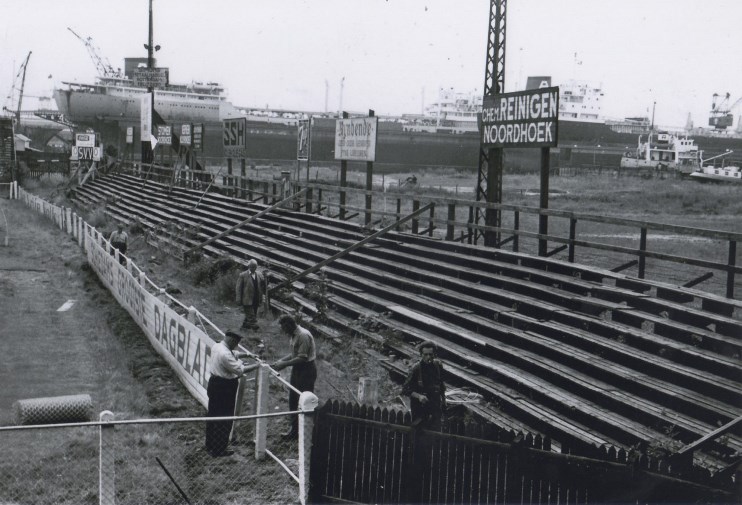
Football by the dockyards. The gritty SVV football terrace at Volkspark Schiedam. Source: volksparkschiedam.nl
Piet, a hardened backman by his early twenties – after seven years, he could just about be considered a veteran – was attracting interest from several clubs including Sparta, PSV and Groningen. But it was reigning Eredivisie (First Division) champions, Feijenoord, who succeeded in getting him to move, offering him a healthy contract and the chance to play with Rotterdam’s biggest and most successful club. Once there the club arranged for Piet to shift from his job as a roofer for one on the wharves, a role where he could clock on and off as needed to attend team training sessions.
Piet would stay with the famous club for ten years, helping Feijenoord win three Eredivisie titles, two KNVB Cups (the Dutch equivalent of the FA Cup) and the European Cup of 1970, the first time a Dutch side took out the title. Piet played more than 250 games for the club, a clever, tough and robust defender, rarely beaten, and good enough to win selection in the Dutch national side in 1967. Another three games for Oranje followed in 1968.
Feijenoord went in to the 1969-70 season having won the Dutch ‘double’, the Eredivisie and KNVB Cup titles. Come early December they were near the top of the Eredivisie, and riding high after a famous 2-0 win in the Second Round of the European Cup over title holders, AC Milan, in Rotterdam on the 26 November.
Piet Romeijn made an early statement in that match, whacking star AC Milan player, Pierino Prati, in the opening minutes. Prati had single-handedly demolished Ajax six months earlier in the Final of the 1969 European Cup, scoring a hat-trick. Piet later commented, “I didn’t injure him. I wanted to show him we weren’t to be trifled with at Feijenoord.”
(The clip below shows Piet Romeijn taking out Pierino Prati at 5:48. Less than a minute later Prati gets his revenge with a crude tackle on Romeijn.)
By any standards Piet had a successful career, with many highlights: playing in several title-winning sides, playing for his country and being a member of Ernst Happel’s feted side that conquered favourites Celtic to claim the European title, a side that, together with Ajax, introduced the world to the mesmerising cleverness and beauty of Dutch football.
Teammates recall a skilful, talented player. Defender Rinus Israel: “He kept it simple football and never made unnecessary mistakes. He would never play an attacker in a risky manner. He was sporting in the duels…” Coen Moulijn, star winger for both Feijenoord and Oranje: “Romeijn was technically an outstanding player. He had a very good long distance shot.” And Hans Kraay: “Piet never let himself be fooled by whoever he played against, he always played well. He was the cheerful boy with a sunny disposition, always optimistic, just someone who occasionally had a tantrum.”
That occasional tantrum was Piet’s little flaw, his tendency to be somewhat impulsive on the field. Never dirty or violent, he just happened to overstep the mark at times. Like the time he was playing for the Dutch youth side against Belgium as an eighteen-year-old and had a run-in with the French referee; he was sent off and received an unprecedented two-year ban from representative football. “I didn’t speak French but he apparently had no trouble understanding me,” said Piet. Officialdom was something he particularly struggled with at times.
And one tantrum usually overshadows Piet Romeijn’s considerable achievements on the field. One moment, ultimately one word, that ended up echoing across Dutch football, and culture, through the 1970s and beyond.
At the close of one tense, tight game, Piet told the referee what he thought of him, using a term that the Dutch daily, De Telegraaf, the next day stated was “…not fit for publication”.
On 7 December, 1969, Feijenoord travelled to Enschede in the east of the country to play the Tukkers, FC Twente, at their home, Stadion Het Diekman. More than 22,000 locals packed into the ground to see Holland’s best team in action against the local lads. Conditions weren’t easy – it was icy cold, snowing, the ground hardly playable. At the 40’ mark, Swedish international, Ove Kindvall, scored for Feijenoord. It stayed 0-1 until the last minute when FC Twente’s Theo Pahlplatz was awarded a controversial free kick and equalised. Referee Arie van Gemert immediately blew fulltime. Piet Romeijn was furious and blew a couple of choice words at van Gemert.
“Je wordt bedankt, hondelul.”
“Thanks a lot, dog-cock.”
Hondelul was not the sort of term to drop lightly into conversations in Holland in those days.
“He got me so wound up when he whistled the end of the game. I walked up to him, and well, I’m not sure how it happened…it just sort of escaped from my mouth,” Romeijn recounted years later.
Van Gemert was stunned. After the match he went into the Feijenoord rooms and offered Romeijn the chance to apologise. Romeijn refused, claiming he said, onbenul – silly, stupid – not hondelul. Van Gemert didn’t accept this explanation. “There’s just one solution possible.” Van Gemert put Romeijn on report under Rule 12 of the KNVB Regulations for ‘bad behaviour’.
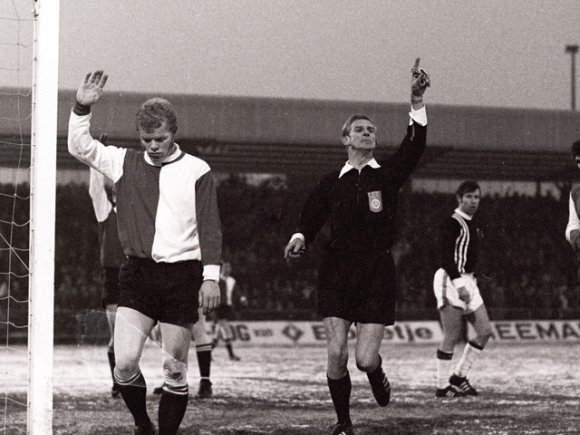
“Je wordt bedankt, hondelul.” Referee Arie van Gemert points to the corner as he declines Piet Romeijn’s request for a goal kick. Source: Voetbal International
The Dutch media went into overdrive: the entire country soon knew of Piet Romeijn and that word. Piet, interviewed a few days later, dropped the onbenul defence and insisted he’d wanted to apologise but wasn’t given the opportunity. “Of course it was stupid of me, I shouldn’t have said it. It was a moment of foolishness.”
But he did: the KNVB fined him 350 guilders. Feijenoord apparently imposed a fine too, and publicly stated his comments were unacceptable. The KNVB also issued a warning to him; incredibly, he escaped suspension.
(Piet had another of these little tantrums the following week, throwing photographer Ed Lohman to the ground after he came on to the pitch to get a close-up of an incident involving Piet’s teammate, Henk Wery in a match against AZ Alkmaar. Given the stresses of the previous week, perhaps he could be forgiven to some extent. No such excuses though the following March in East Germany against Vowarts Berlin in the quarter-final of the European Cup – a tantrum in that game led to a send-off, a three-week suspension and a fine from UEFA. To be fair, Happel’s coaching may have contributed to Piet’s run of tantrums in the 1969-70 season; Feijenoord was renowned for its physicality under the Austrian maestro.)
With the wide media coverage, Hondelul quickly took on a life of its own; it found a home – and loud voice – on the terraces of Dutch football grounds, becoming one of the favoured terms of abuse directed at referees across the country through the 1970s and 1980s. If you didn’t like the referee’s decision, HONDELUL! Or, to use the more expansive forms, Hi Ha Hondelul! and Hij is een hondelul!
The word resonated across Dutch football and the broader culture, its simplicity, its illicit delight, attuned to the restless mood of youth challenging authority, one more way to confront what was then the staid norms of Dutch society. In the view of Dutch football journalist Roberto Pennino, hondelul formed part of “…the dividing line between the ‘virtuous’ fifties – early sixties on one side and everything that came after that. The loss of innocence and gentlemanship…to more vulgar times both on and off the pitch.”
In the decades following, hondelul held its popularity, though its punch and impact shifted from one of abuse and shock, to one largely of amusement. Usually sung to the tune of the old popular song, Ta-ra-ra-boom-de-ay.
It popped up in new forms. Such as in 1982 when the song “Hi Ha Hondelul” appeared on a Dutch punk album, Eton Crop, by Pistache BV.
Then in the 1990s the book, Hi-Ha-Hondelul en andere sportpoezie (‘Hi-Ha-Hondelul and other sports poetry’) came out. As far as author, Ko van Geemert (no relation to the referee) was concerned, the title was appropriate. “The supporters added feeling to the strong word Piet Romeijn used by adding ‘Hi-Ha’. People realised it could be sung, which is wonderful. Maybe not everyone agrees with this but you can see Hi-Ha Hondelul as poetry, it really crosses over.”
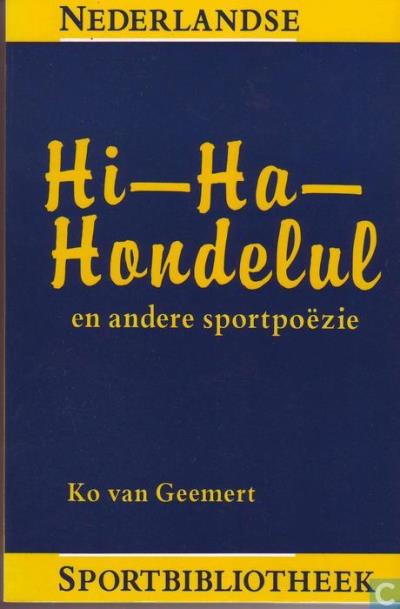
The cover of “Hi-Ha-Hondelul and other sports poetry”
Arie van Gemert was invited to the book’s launch. “What do you take me for? Do I have to be reminded time and time again of that game in 1969?” said a clearly frustrated van Gemert. He declined the offer.
These days the term has faded from use on the terraces, replaced by much more outrageous, contemporary terms of abuse. “Hondelul is peanuts compared to modern insults”, Pennino told me. But it still makes an occasional appearance from time to time, still retains a certain cache. Recently it popped up as the title of a Dutch play about football supporters. It also appears as a slogan on t-shirts and it’s the title of a popular Dutch football comedy show – De Grote Hi-Ha-Hondelul Voetbal Show.
And here’s a football hooligan sketch from Dutch comedians Van Kooten & Di Bie where hondelul features several times, especially after 1:50.
All this from one minor incident on the football field many years ago between two headstrong individuals.
In football circles, popular culture and even some academic references, Piet Romeijn is credited with being the originator of hondelul. It aids perceptions that he fits the mould of one common enough to be familiar with such language: after all, he was a wharfie from rough old, working class Schiedam.
Just like van Gemert, Piet is sick and tired of his association with the word (he too avoided the launch of that sports poetry book) though knows there’s probably nothing he can do these days to distance himself from it.
But recent research has shifted the gaze – or blame – somewhat. Whilst acknowledging that Piet popularised the term (via the media outrage, it must be said), it turns out that hondelul was already being thrown from the terraces before this: the newspaper, NRC Handelsblad, noted in October 1969 that fans were using the “inexcusable slogan” against referees. And De Telegraaf the day after the incident said Romeijn was only using a term that was already in vogue by supporters.
So, the truth is, Piet Romeijn is innocent, to some degree anyway. But he isn’t completely blameless, and he certainly can’t avoid being associated with popularising the term. If it’s any consolation for him, at least the term’s intent has shifted with time from abuse to humour.
Yes, sometimes an occasional tantrum can have far-reaching consequences.
Authors Note:
- Many Dutch words and names with ‘ij’ in them (pronounced as ‘y’) have been ‘modernised’ in recent decades. Feijenoord, for instance, formally changed its name to Feyenoord in 1974. Some in the Muijt and Romeijn families have also changed over to the ‘y’ form.
- Thanks Corry Pynaker for select translation of Dutch-language material. Also thanks to Roberto Pennino for his insights into the hondelul phenomena and Piet Romeijn’s role in it.
- And thank you to Volkspark Schiedam and Voetbal International for the use of their wonderful photos.
Adam Muyt is the author of Maroon & Blue: Recollections and Tales of the Fitzroy Football Club. He is currently researching the Dutch football teams of Australia. You can read some of his research in a piece published in Shoot Farken – “Clogball.”
